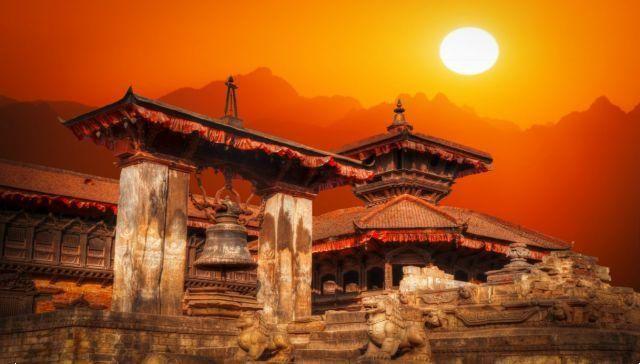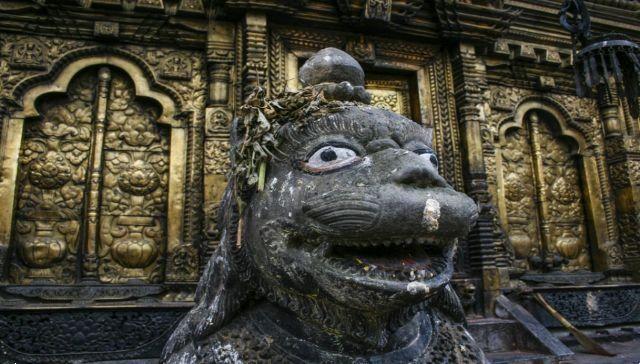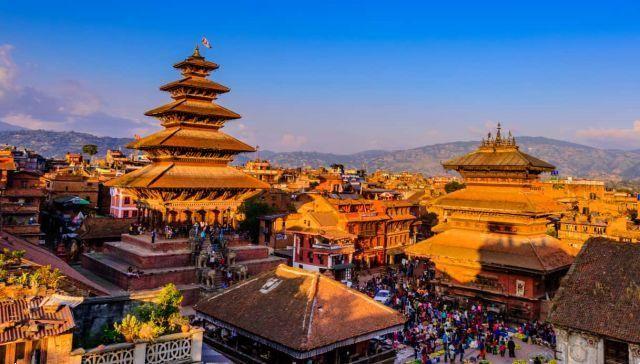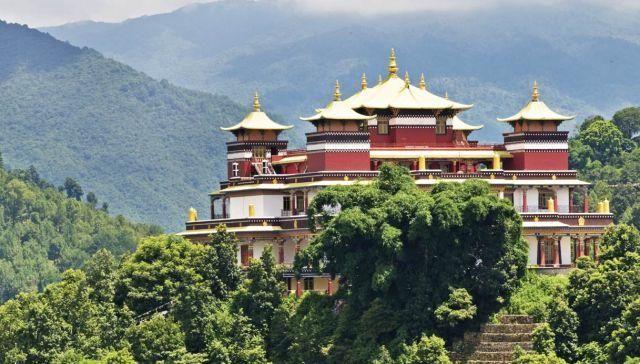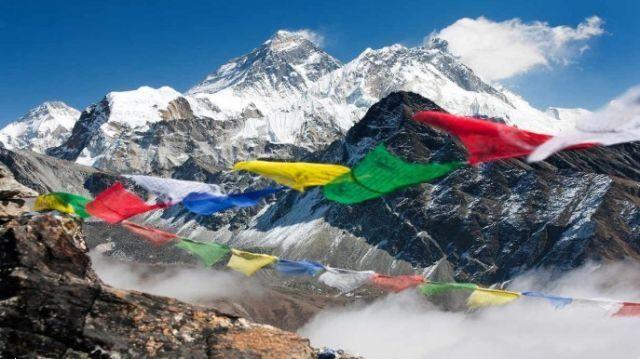
Source: 123rf
Nepal is one of the most evocative countries in the world ideal destination for trekking and mountain lovers. The whole area offers a unique experience, discovering the historical and cultural beauties of the capital: from Kathmandu, with its thousand Hindu and Buddhist temples, to the parks of the temperate regions, among wild animals and almost uncontaminated nature, up to the villages perched on the most impervious mountain ranges on the planet, such as Everest in the Himalayas and the Annapurna chain . Here's what to see in Nepal, a country that, unfortunately, was heavily hit by the 2015 earthquake, and which needs tourism more than ever to recover.
What to see in Nepal: the capital Kathmandu
One of the places to visit in Nepal is certainly the capital Kathmandu, the economic and social heart of the country, a modern city, but at the same time guardian of the traditions of Hindu and Buddhist culture. Characterized by a slower pace of life than European standards, Kathmandu offers visitors a wide choice of places to discover and activities to do during their holiday, including visits to temples, gardens and places of worship.
A must stop is the ancient Swayambhu temple, also called Monkey Temple, where you can climb over 300 stone steps to enjoy one of the most evocative views of the capital of Nepal. Don't miss the site Bhaktapur, declared World Heritage Site by UNESCO, located near Kathmandu. Within the area there is also the Nyatapola temple, the famous Taumadhi square and two other historical buildings, the Dattatreya and Pujari temple.
Equally interesting is the Thamel area, with its narrow and always very crowded alleys, where restaurants specializing in typical local cuisine, travel agencies and shops for trekking equipment are concentrated. Also worth visiting Durban Square, in the Patan district, an area of great historical interest which requires an entrance fee of €8,5, or Garden of Dreams, a former private residence now open to the public, made up of various buildings dedicated to the seasons, with fountains, internal gardens and decorations.
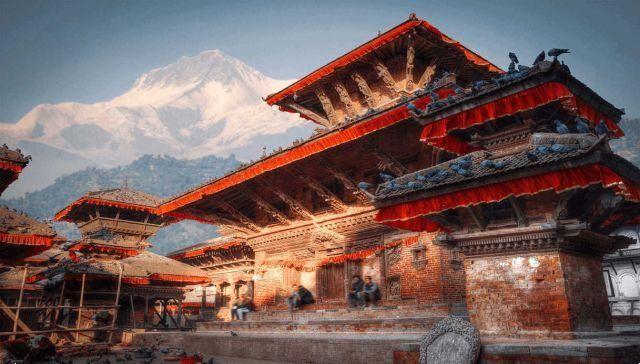
What to see in Nepal: Pokhara, the city of 7 lakes in Nepal
Pokhara, the "city of lakes", as it is called in Nepal, is located near the Kathmandu Valley, at the foot of the Annapurna mountain range, in the Himalayas, one of the highest peaks in the world and (almost) impossible to climb. It is the second city in the country in terms of importance and size, located at a height of approximately 1.000 meters above sea level, in the region of Gandaki. Pokhara is a very popular destination for hikers, in fact walking or boat trips are organized daily in the splendid surrounding area, to see the beautiful 7 lakes in the area.
The most tourist spot is the area in front of the lago Phewa, where the accommodation facilities and visit guides are located. For trekking lovers Pokhara offers many itineraries, especially towards the Annapurna peaks and the Machhapuchhre skyline. The options are truly countless, in fact it is possible to prefer a trip to the Begnas and Rupa lakes, from which you can admire a splendid view of the valley, go to the nearby Barahi temple, the Davis and Patale Chhango waterfalls, or visit the temple of Bindhabasini, where it is located one of the oldest bazaars in Nepal.
What to visit in Nepal: Nagarkot, between paragliding and observation points
A trip to Nepal wouldn't be complete without one sosta a Nagarkot, the closest city to the capital Kathmandu, located at the foot of the imposing Mount Everest, which overlooks the area with its 8848 meters of height. Nagarkot is a small village, located at 2.175 meters above sea level, offering some very important sites and a breathtaking panorama on the Himalayas. One of the most requested activities are i paragliding flights, a way to remember Nepal forever, observing these wonderful landscapes from a unique perspective.
For the less courageous there is the path that leads to the observation tower, which offers a 360 degree panoramic view of the area and the nearby mountains. However, there is no shortage of excursions for those who want to discover the area on foot, to be undertaken alone, in a group or with local guides, depending on your needs. One of the experiences not to be missed is the view of the mountains at dawn, therefore it is advisable to go to bed early and wake up early, to witness an incredible show, which allows you to admire the mountain ranges in all their splendor.
Safari in Nepal at Chitwan National Park
Nepal is not only famous for the presence of the Himalayas, in fact they are well found within Nepalese territory 8 natural parks, including the beautiful Chitwan National Park, declared a UNESCO World Heritage Site in 1984. Located in the Terai area, about 150 km from the capital Kathmandu, Chitwan boasts a size of over 577 square kilometers, one of the largest in the country. Guided tours are organized daily in the park, available in various languages, but especially in English.
Inside the Chitwan park it is possible to participate in real events safari, to spot animals such as elephants, monkeys, bears, tigers, rhinos and over 500 different species of birds and reptiles. The Entrance fee is around 15 euros, however, when booking a guided tour, entry is often included in the proposed price. It is possible to visit the park either on foot with guides or by jeep, the latter being a much safer solution to avoid any risk. Furthermore you can spend the night in the jungle, inside turrets installed for tourists, go canoeing or discover the surrounding countryside by bicycle.
Cosa vedere in Nepal: Namche Bazar, tra storia, cultura e natura
Located in Sagarmatha district, the village of Namche Bazar is located at the foot of the Himalayas, at an altitude of 3.440 above sea level. Despite having a population of just 800 inhabitants, the town is one of the most visited destinations by tourists during trips to Nepal, due to the immeasurable beauty of the landscape in the area. Life in Namche Bazar is quite lively, thanks to the numerous commercial activities, the various markets selling local craft products and typical Nepalese cuisine.
It is a stop frequented by those who want to climb Everest, due to its strategic position, however it is possible to visit the village only to come into contact with the wonderful nature of the place. The rarefied air requires a acclimatization period, therefore it is advisable to spend at least a few days in the town. Absolutely worth seeing museum of medicinal plants, the Buddhist monastery of Namche and the ancient library, without forgetting an excursion in the surroundings accompanied by local Sherpas, up to the nearby village of Lukla.
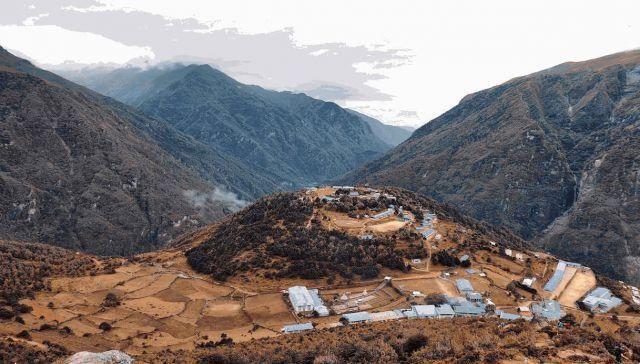
Source: 123rf
Trip to Nepal: Ghorepani, along the Poon Hill path
Ghorepani is considered one mandatory parking, a stop on excursions along the Annapurna reliefs, to admire the suggestive nature of the area and theunique atmosphere of these mountain landscapes. The village is located at around 1.600 meters above sea level, so it is not easily reachable by anyone, only by those who decide to visit Nepal to face the heavy trips along the paths on the mountain ranges. Ghorepani is located within the Muldhai Trek itinerary, an extension of the better known one Poon Hill, which allows you to get to the observation point of Muldhai View Point at almost 4.000 meters above sea level.
What to visit in Nepal: Jomson, a shelter before the climb
Jomson village is located in 2.800 meters of altitude, inside the Mustang region, an administrative center used as a temporary stop for those climbing the slopes of Annapurna. All around flows the River Kali Gandaki, which together with the peaks of the mountain ranges creates an enchanting landscape in both summer and winter. The town does not offer historical places to visit, but at the same time allows you to rest especially when the weather conditions are hostile, taking advantage of the generous and friendly hospitality of the inhabitants of Jomson.
What to do in Nepal: Sarangkot, among waterfalls, lakes and caves
Near Pokhara there is also the Sarangkot village, from which it is possible to enjoy a breathtaking view of the Annapurna mountains. Located at around 1.600 meters above sea level, this small town is quite frequented by tourists, in fact it is possible to carry out guided walking tours, paragliding and using the village as a base to visit the nearby mountains of Machapuchare and Dhaulagiri. Also worth seeing in the surrounding area are Phewa Lake, Davis Falls and the Mahendra caves inhabited by bats.
Trip to Nepal to discover the Sagarmatha National Park
In eastern Nepal there is the Sagarmatha National Park, located at an average height of 3.000 meters above sea level, which includes a portion of the Himalayas and the summit of Everest, as well as the villages of Lukla and Namche Bazar. The area can be visited on foot, following the paths provided for trekking enthusiasts (both in summer and winter), possibly accompanied by expert local guides, planning frequent stops in small towns in the region. In addition to the beauty of nature, in Sagarmatha park you can admire different species of animals and birds, including yaks, bears, deer and monkeys.
What to visit in Nepal: Ghandruk, along the descent from Annapurna
Coming down from Annapurna a fascinating stop is the Ghandruk village, located along the path that allows you to reach the towns of Nayapul and Birethanti. Here it is possible to rest before continuing the walk, choosing between different routes depending on your tiredness and remaining energy. The inhabitants of Ghandruk are mostly breeders and farmers, however they never fail to be hospitable to tourists, so you shouldn't miss this unique opportunity to refresh yourself, rest a bit and admire the majesty of the surrounding landscape.
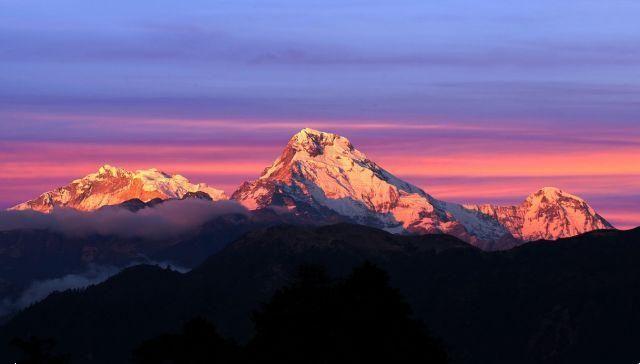
Source: 123rf
Holidays in Nepal: Tengboche, a stop at 4.000 meters above sea level
Adventurers who want to climb Everest will find on their path the village of Tengboche, a almost surreal area located at approximately 3.867 meters above sea level, in Khumbu region. It is an important Buddhist pilgrimage center, which attracts faithful to visit the Tengboche monastery, built in the early 1900s. The sanctuary hosts a community of over 60 Tibetan monks, who pray inside the monastery every day, leaving the doors open to tourists and pilgrims. During the last decades the town has become a base camp for Everest climbing, thanks to its strategic position.
What to see in Nepal: Gokyo, the village in the middle of the lakes
Gokyo is a small village in Nepal located in a area famous for the presence of several lakes, commonly called the Gokyo Lakes. The region can be reached on foot from the town of Namche Bazar, through a walk of a few hours along the mountainous paths of the area. They leave from the village several trekking routes, from which to admire the wonderful mountain peaks, the Gokyo lakes and the evocative sunset that illuminates the entire valley, before swallowing it in darkness. Don't miss the view of the Gokyo Ri, mountain ranges that are part of the Himalayan chain.
Trips to Nepal: Dulikhel, a moment of relaxation in the mountains
Located less than an hour from Kathmandu, in the valley of the same name, is the town of Dulikhel, an ideal stop for your trip to Nepal. In addition to the magnificent view of the Himalayan peaks, Dulikhel offers tourists several places to visit, including the Shiva temple, where you can get in tune with the serene and relaxed atmosphere of the place, or your neighbor Namo Boudha village, where there is a panoramic tower. It is a perfect place to enjoy a few days of relaxation, spending your days hiking in the surrounding nature, rafting and moments of personal intimacy, contemplating the wonderful landscapes of the area.
What to see in Nepal: Langtang valley, between villages and mountain peaks
One of the most suggestive areas of Nepal it is the Langtang valley, a region much visited by tourists who are passionate about trekking. Obviously the environmental conditions are difficult, in fact we move at an average height of around 2.000 metres, therefore a acclimatization period stopping in some intermediate villages. Unfortunately today there are still the remains of the rubble caused by the 2015 earthquake, however many towns have been partially rebuilt and can be visited.
To get to Langtang Valley is necessary take a bus or jeep from Kathmandu, facing a journey of about 8 hours along the rough roads of the region. Then you have to pay the entrance to Langtang park, around 34 euros, continuing on foot along one of the many paths in the area. Between most important villages in the park there are Rimche, 2.450 m, Pairo, 1.800m and Thyangsyap, 3.200 m. From the Langtang Valley you can reach several peaks, including Gang Chhenpo, 6.388m, Langshisha, 6.370m and Langtang Lirung, 7,234m.
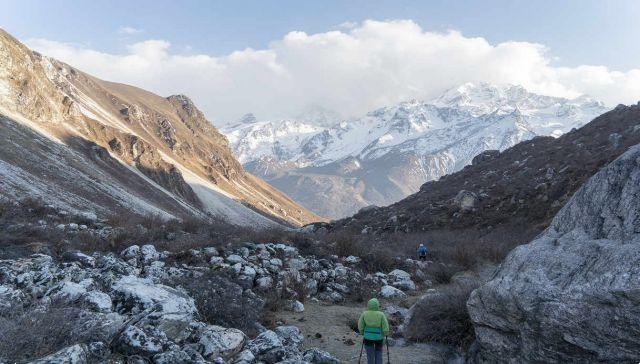
Source: 123rf
Trip to Nepal: Rara Lake, the smallest national park in the country
Connected to the rest of the country by the tiny airport of Talcha, Lake Rara is one of the most interesting destinations for a trip to Nepal, reachable on foot from the airport through a walk of a few hours. The lake is included in the national park of the same name, which is located at aheight of approximately 3.000 meters above sea level, boasting a depth of over 160 meters and an extensive ecosystem. During the excursion towards Lake Rara you can admire rare species of bears, pandas, mallards and grebes, while in the background there are wonderful peaks of the Himalayas.
Nepal: Bardia Royal National Park, the habitat of tigers
Among the places to see in Nepal there is certainly the Bardia Royal National Park, located near the town of Nepalgunj, connected to the capital Kathmandu by a small local airport. The Bardia park is renowned for hosting some rare specimens of Bengal tiger, an animal in danger of extinction and particularly difficult to spot. The only way to visit the park is by back of an elephantIn fact, jeeps and any type of motor vehicle are prohibited. Unlike the Chitwan park, which is always very crowded, in Bardia it is possible to enjoy a more relaxing and intimate environment, with few tourists deciding to venture here.
What to visit in Nepal: Manang, an outpost towards Annapurna
Perched in the Annapurna Mountains, oneheight of 2.519 meters, the small village of Manang is an outpost along the area's mountain climbing trails. The town has just a few hundred inhabitants, who live on the banks of the Marshyangdi River, a conglomerate of rural housing and Spartan, without asphalted roads and motorized means of transport. At the same time, just 2,5 km away from Manang there is a small airport, which allows you to reach this location and tackle the climbs to the peaks of Appanurma.
Trekking in Nepal: the best itineraries and useful advice
In Nepal trekking is themain activity of tourists visiting the country, attracted by the thousand paths of the region, by the spectacular landscapes of the area and by the almost uncontaminated wild nature of the mountains. There best season for trekking in Nepal it is autumn, with the months of October and November being the most requested by travellers, in fact it is the least rainy period, with mild temperatures during the day and not excessively cold at night, conditions which often guarantee aexcellent visibility of the mountains of Nepal.
However, to tackle trekking in this country you need to be trained, because although it is possible to find routes for all levels, the high altitude forces you to deal with the lack of oxygen, an aspect that pays off breathing is difficult and requires a few days of acclimatization. In general it is advisable do not exceed 3.000 metres, especially in the first few days, unless you are duly prepared, avoiding walking for more than 6 hours a day.
In Nepal the trekking trails are divided based on the degree of difficulty, following a scale that goes from A, the least demanding, up to E, reserved for expert climbers who want reach the most inaccessible peaks. Among the best itineraries of grade A there are for example Ghorepani/Pool Hill, Helambu, Shivapuri and Ghandruk, meanwhile B grade, with heights of up to 4.500 meters, include routes such as Manaslu, Langtang, and the campo base dell’Annapurna.
To climb up to 5.000 meters high instead we move on to grade C, following tiring and difficult trekking routes, including the Upper Mustang, the campo base dell’Everest and the Annapurna circuit. Finally, among the most extreme routes, classified as grade D and E trekking activities, there are for example Dhaulagiri and Ganja La Pass, which require experience and specific equipment to sleep in the open air in improvised base camps.
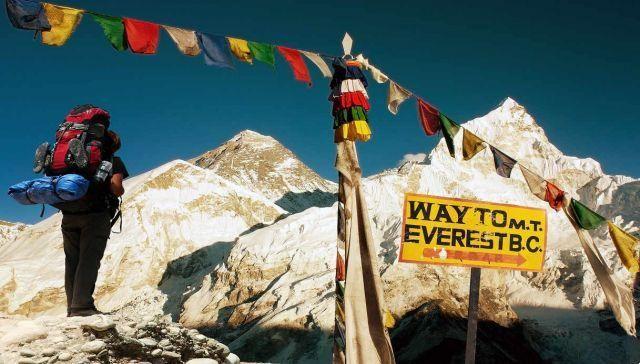
Source: 123rf
How to organize a trip to Nepal
A trip to Nepal is a completely different experience from any other, so it is necessary prepare adequately and plan each stage and aspect of the holiday. First of all, you need to have sufficient time available, usually at least 10-12 days, necessary to adapt to the climate of the area and the high altitudes of most of the tourist locations in the country. Furthermore, we must consider that many journeys require considerable time, so just going from one city to another can take an entire day of travel.
In fact, the climate in Nepal should not be underestimated weather conditions can change suddenly, forcing you to wait even a whole day before continuing. Clothing in Nepal must also be taken care of down to the smallest detail, since although temperatures are quite pleasant in some seasons, they can drop suddenly at night. They must not be missing in your suitcase for Nepal thermal clothing, fresh clothes for hiking and clothes that you can wear in layers, as well as of course glasses to protect you from the sun, sun cream, head hats and neck scarves.
To organize a trip to Nepal it is advisable to contact aspecialized agency, or choose the main places to hire local guides on site, studying the travel arrangements. As far as documents are concerned, a simple one is enough passport, with a remaining duration of at least six months, however you need to get a visa to travel to Nepal with one maximum duration of 90 days, an operation that can be carried out both upon arrival at the airport and online, on the official website of the Nepalese Consulate in Rome.
For purchases the currency in Nepal is Nepalese Rupee, whose current value is 124,74 rupees for one euro, while there are no particular health problems in the country. Vaccines are not required in Nepal, but it is preferable to have the one againsthepatitis A and B, a tetanus shot and a typhoid shot. Above 1.500 meters above sea level there are no problems or epidemics, while in the Terai region on the plains one must protect oneself against the malaria, using remedies against mosquito bites.
When to go to Nepal: the best times
Understanding when to go to Nepal is not easy, in fact despite the best time indicated by tour operators as autumn, in reality it is possible to visit the country all year round, considering that the time zone in Nepal is 5 hours ahead of Italy. In Nepal the climate changes according to altitude, with a sub-tropical zone on the plain, a mild and temperate climate up to 2.000 meters above sea level, while above 3.000 meters above sea level the conditions are extremely rigid. The rainy season affects the months of July and August, with normal rainfall during the rest of the year.
To avoid the monsoon season, it is advisable to organize your trip to Nepal during the period from November to April, however in the plains starting from March the temperatures can already be particularly pleasant. In the zona di Kathmandu for example they range from 2 to 18 degrees in January, to 20-28°C in July, while in that of Pokhara they remain above the minimum 10°C practically all year round. Nepal in August is therefore not an ideal destination, due to the heat and intense rain, so it is advisable to opt for autumn or winter.
At the same time the final decision must be made based on the activities to be carried out, in fact for trekking on the mountain peaks of Nepal winter is to be avoided, while to visit the flat areas and natural parks up to 2.000 meters it is in fact the best season. For this reason it is important to contact a tour operator esperto, planning a hassle-free trip to Nepal, to discover this wonderful Asian country.




